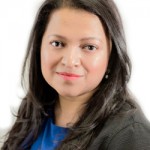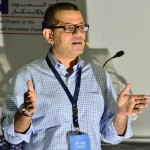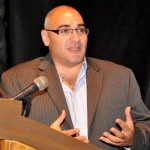Keynote Speeches
Day 1
28 May 2016
Day 2
29 May 2016
Software Engineering, What And Why
Prof. David Parnas
,
Ph.D., P.Eng.(Ontario);
Dr.h.c.: ETH Zürich, Louvain, Lugano ,TU Wien
Fellow: RSC, ACM, CAE, GI, IEEE; MRIA
One of the Pioneers in the History of Computing
Abstract
In the 1960s, some scientists and mathematicians who were interested in computers observed that software development was a profession that had more in common with Engineering than it did with the fields in which they had been trained. They had mastered a body of knowledge and been taught how to extend that knowledge. They had not been taught how to build software products that would be used by strangers.
It was proposed that, in addition to “Computer Science”, there should be a new engineering discipline called “Software Engineering”. Critics said that a new field wasn’t needed but today the importance of the field is indisputable; we depend on software in the same way that previous generations depended on roads and engines. The world needs software development professionals who have learned to work with the discipline expected of professional engineers.
The early pioneers did not identify the capabilities required of practitioners in the new field. Although there have been several efforts to identify a “body of knowledge” for Software Engineering, none have captured the essence of the field. This talk addresses the question, “What should a Software Engineer be able to do?” Starting with two historical characterizations of the field by leading pioneers, it describes and explains a set of capabilities that are essential for today’s “Software Engineers”.
The talk is addressed to educators, managers, licensing authorities, and, of course, developers.
Real Time Predictive Analytics for Social Media
Alain Chesnais,
Distinguished ACM Speaker
Abstract
Social media has grown dramatically over the last decade, both in terms of adoption and in terms of volume of information shared. Such growth proses huge challenges for people looking to make sense of what is going on within social media.
This presentation addresses those issues and presents the mathematical framework that we designed at TrendSpottr to make the analysis tractable and allow end users to make sense of all the data being shared on social media for topics that they want to track. One of the major challenges, aside from the sheer volume of data that needs to be processed, is the timeliness of the results. Ideally one would want to be able to react to new viral subjects early enough that the proposed reaction, either amplification or diminution, can take place before it is too late. We will discuss typical time frames that we have measured on existing social media along with a discussion on why the time frames differ depending on the type of social media that you are analyzing.
We will then go into the notion of real time estimators of key values that a social media user might want to track and how to best use such estimators to derive meaningful results to guide social media tactics.
Big Data, Fog Computing, and the New Experience Economy
Ali Rebaie,
Data Science Advisor, Industry Analyst
Abstract
How to transform customer’s moments into better experiences towards your products.
Innovative uses of Data in industries like sports, fashion, energy and agriculture.
Shedding the light on the next big trends in big data.
Is Big Data for big companies with huge amounts of data and big budgets? Or is it a myth?
Assessing your maturity before implementing big data technologies.
Be Disrupted or Transform
Megha Kumar,
Senior Research Manager, Software, Middle East, Africa and Turkey, IDC
Abstract
Increasingly the way industries and organization run is changing drastically driving the need for new operation models and strategic decision making.
This presentation looks at the drivers for cloud and big data as well use cases and guidance to improve adoption.
Africa and Software of Things: Engaging the Knowledge Olympiad
Okwu Marcus ,
Software Architect, AFICTA Nigeria
Abstract
The knowledge Olympiad is here and Africa must step forward to be counted and digitally ready at all levels, if she must survive the emerging critical challenges, traumatic impact as well as secure the opportunities and benefits presented by ‘globalization order’ of the 21st Century. Competition had always been the Hallmark of appraising human development at traditional and modern levels. In the Stone Age as we know it, physical muscle was the measure to determine right and progress.Today, Humanity lives in a ‘Software-first’ World, where Innovation and disruptive creativity has become the center of gravity of life and significance of human existence. And by extension – in my professional evaluation – the most constructive, disruptive, (or obstructive) and strategic pathway to Africa’s future and survivability, resides in the mastery, application and sustainable control of her Intellectual Capital. Africa must innovate or be digitally enslaved. We must move from abject consumer to respectable creator and producer – with special reference on how to aggregate her Software potentials, skills and capacities for global competitiveness.
This Keynote focuses on the concept of “Africa and Software of Things” (ASoTs) within the context of IoTs therefore addresses the vision, mission, mechanisms and dynamic approaches for developing the continent’s inter-connected knowledge architecture and Framework – as a creative response for the emerging impact of Internet of Things & Everything. The keynote will make useful recommendation for adding incremental value to Africa Software Ecosystem – through Africa Software of Things (ASoTs).
Unleashing the Power of Data-Driven Innovation and Entrepreneurship in the MENA Region
Dr. Raed M. Sharif,
Senior Program Officer for the Networked Economies program at IDRC’s Regional Office in Cairo, Egypt ,
Abstract
The Middle East and North Africa (MENA) region continues to show by far the highest youth unemployment rate in the world, reaching almost 30% in 2015. These rates have continued to worsen since 2012, particularly for young women. This is more than double the global youth unemployment rate, stabilizing at 13 % by the end of 2014. At the same time, data, increasingly referred to as the new oil or soil (or even pipes) is helping thousands of entrepreneurs around the world launch new businesses and come up with products and services that we could not even imagine a few years ago. For example, open data is increasingly seen as the foundation on which entrepreneurs can build innovative products and services, big data and analytics are used to improve organizational productivity and effectiveness and crowdsourced data is now gaining more interest and becoming the business model for new entrepreneurial activities.
In this talk, I will discuss the potential social and economic value of data-driven innovation for entrepreneurship and youth employment in MENA and present a framework to realize these tremendous benefits through effective utilization of open, big and crowdsourced data, as well as strengthened organizational and human capacities.
Bringing Higher Value from your off-shore Development Center Through Innovation
Hicham Arafa,
R&D Director, Valeo Egypt
Abstract
It is usually starts as a low cost destination and by time if success is proved, teams starts to gain experience, knowledge and then know-how. This happen when center strategic management vision, knowledge management, talent management and innovation management integrates together. Moving upward the value chain leader through continues value creation, competency building and competitive offering is the only guarantee for the center not just to grow but even to survive.







